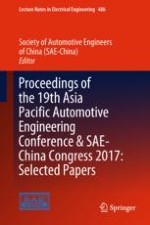2019 | Buch
Proceedings of the 19th Asia Pacific Automotive Engineering Conference & SAE-China Congress 2017: Selected Papers
herausgegeben von: Society of Automotive Engineers (SAE-China)
Verlag: Springer Singapore
Buchreihe : Lecture Notes in Electrical Engineering
